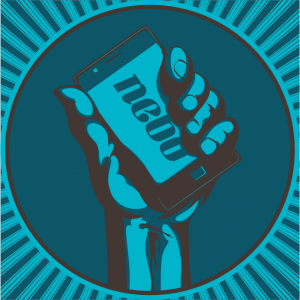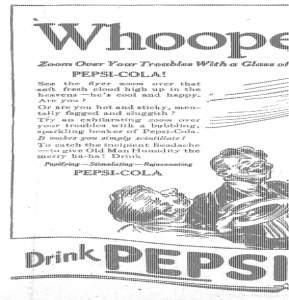Marketing Redefined: Creating and Cultivating Connected Experiences
Brendan is 16. He lives in a major US city. He’s thinking about girls and college. He watches football and soccer. He plays video games. He’d rather text than talk on the phone. He’s also exposed to about 5 million ads per year, which he completely ignores. He has a laptop, iPad, smart phone, smart watch, and an Xbox. He’s always connected to more than one device. He’s part of Generation Z. He’s optimistic, and the future is an ever-expanding place that he wants to explore.
He consumes most of his “TV” content across his many devices. He’s never clicked a display ad. He reluctantly has a Facebook profile, but lives on Snapchat, Instagram, and apps that connect to the things he values. He doesn’t trust advertisers or brands.
Instead, he trusts his friends. He doesn’t understand when his experiences aren’t personalized and he’s disappointed when thinking of the lack of offline and online convergence. He expects instant everything, a connected everything.
Brendan lives in many worlds: some overlapping, some converging, some distinct. His digital self converges with his offline self quite often. But many times, they’re completely different. His worldview and expectations change depending on device and location. He lives in one-way connected worlds while watching TV or radio, but expects engagement when on social or in the “real” world.
He has his digital universe, his social universe, and his 4-D existence. His various multiverses are based on the context, device and location he inhabits. Some conscious. Some unconscious. He has his actual self. His ideal self. But it’s always a convergence of various dimensions and expectations.
Brands have permeated his mind, but on his terms. This consciousness is what he guards most. He’s more than willing to kick a brand out of his mental universe if they let him down or violate his expectations.
Brendan expects more. He wants more. His worldview and standards don’t reflect the ways brands or advertisers interact with him.
“Marketing” Belongs in the 20th Century
Marketing and advertising as we know it are dead. We’re at the beginning of a paradigm shift that’s going to change everything. I’ve written before about the coming post-social world. And many prominent thinkers have recognized that marketing, even in a two-way manner (social / engagement / experiential), doesn’t recognize the emerging reality. Even digital marketing is a term that doesn’t make sense anymore.
We’re about to enter a world where we’re always connected. Where we’re always becoming. Where we’re always co-evolving. Where we’re always converging. The Internet of Things, the merger of man and machine, and the thousands of data points not being used effectively (location, device, weather, mood, health, context, etc.), the expectation of brand engagement, hyper-personalization and more are changing and will change consumer expectations for marketers.
Even without the technology disruptions, our industry was already in a state of transition. The old methods of marketing increasingly don’t work, despite marketers' repeated attempts to recreate the past.
Attention and trust are our most scarce resources. Over the years too many brands have abused the public’s trust, and marketers are no longer viewed as trustworthy disseminators of information. Authentic connections with communities (loose, tight and closed), expert reviews, word of mouth, targeted, problem-solving paid and earned media campaigns and experiential user experiences are now the best ways to get your message to spread in this multi-screen, multi-platform, Internet-of-Things world.
And as always, when the world changes, we struggle as we try to make what worked before fit the new realities.
The Age of the Empowered Consumer
We’re in an empowered consumer world now. The old methods of blasting people with ads, interruption marketing, gimmicky search marketing and over-the-top brand promises are increasingly ineffective. This is evident by the rising cost of attention. CPMs have outpaced inflation by 100 percent over the past 40 years.
We should’ve known this would happen. We knew better. The old ways that seemed to work before fail even more so now. To succeed in this new world, we need to create meaningful interactions online and offline, across devices, in ways that solve problems and respect the buyer journey. We need to help brands connect in deeper and more authentic ways with their audience.
We need to help brands evolve from marketing to being an authentic part of their customers’ lives. It’s about co-evolution. Interlapping and overlapping worlds. Shared ecosystems. Synthesized experiences. Co-existence. Entering the customer’s consciousness without malicious intent — in a realistic and problem-solving way. It’s about empowering consumers to make the best choices for their lives on their terms.
Since the 1950s, we’ve looked at the world and customers in a very simplistic manner: Brand — and the corresponding mindshare we seek to achieve through one-way, hyper-controlled communications — and “Response.” Not just direct response, but whatever action we attempted to get the user to take.
We viewed the world like a fisherman. Let’s drop a line and see what we can catch. Maybe we change locations. Maybe we change bait. Maybe we change technique or time of day. But at the end of the day, the brand simply viewed its customers as fish to be reeled in.
A New World Needs a New Philosophy
We need to stop being desperate for attention.
We have to stop viewing people as conversions: a user is not a keyword or click. What we need to realize — and care about — is that a customer is a person. We lie and overpromise.
The future is going to be something none of us can predict. We don’t even know what screens are going to be like — there isn’t a tactical roadmap to navigate this new world.
We need to embrace the art and science of our craft. But that’s not enough. We need new values. We need to go beyond simple understanding of customers. It’s one thing to know the demographics and psychographics. This just tells us the what.
We have to move beyond clicks, impressions and conversions. Those KPIs limit us. The challenge is that brands measure their marketing teams and agencies on things like traffic, impressions and share of voice. But that limits us. We need to start thinking about relationships.
Instead of lifetime value, we need to think about our shared existence. We need to think about what it means as a brand and marketer to coexist with consumers.
This means we need to prioritize customer experience over traffic. Customer experience trumps traffic or eyeballs — always and forever.
We need to tell the truth and we need to stand for something.
We need to love existing customers. Why can’t we give our existing customers more love than potential customers?
We need to be authentic. We have to understand a brand’s limitations.
We need to re-establish trust.
Most importantly, we need to put relationships over revenue.
We’re in an age of consumer empowerment, whether we like it or not. Whether we agree or not. Whether we’re ready or not.
The definition of marketing has to change. Our challenge is really to regain the public’s trust. It’s up to us to rebuild that trust. It’s up to us to determine if an ad is true or if we’re overpromising.
It’s up to us to determine if something we create is going to make people’s lives better.
Creative Experiences Will Rule the Day
In this new world, brand, message and user experience will be the only sustainable key differentiators. Technology is always commoditized. And in this new world, the pace will be even more frenetic. Technology and innovation matter, but are simply better hammers and nails. Reach will also be commoditized. Anyone can buy eyeballs, but adding value and making the world a better place will be the things that matter.
Our .com World Will be a Relic of the Past
We need to stop building for a .com world. Your .com site is just part of the experience, and it’s an increasingly smaller part. Current web design, development and even UX are limiting. Great developers aren’t just developers, just as great designers and UX specialists aren’t just designers and user experience experts. They’re builders of new worlds and destroyers of old ones. They build. They create. They invent. They re-invent. They make the world beautiful, then more beautiful.
Your customer’s experience doesn’t start and end in a digital world or an offline world. Customers don’t delineate between online and offline; between paid, owned and earned media. It’s just your brand as it relates to their mental universe.
Earned Media Will Equal Trust
In this new world, we will have to authentically converge into our clients’ lives. We’ll need to elegantly integrate into their defined role for us. We’ll need to work hard to cultivate relationships and build trust. We’ll need to build experiences centered around customers’ needs, not ours. This means we need to stop looking at earned and owned media as separate. It’s not about PR vs. copy vs. paid. It’s about being gardeners who carefully nurture our customers. It’s about telling authentic stories and spreading them in authentic ways. It’s about realizing that the core of a great story is an authentic truth that makes a reader’s life better.
We’ll Need to Provide Omni-Connected Brand Experiences
As marketers, we think in channels. We silo departments and efforts and want nice categories. But consumers don’t consume in this way. A customer doesn’t think “Let me consume paid media, then earned, then .com.” We are about to live in an Internet-of-Things world. We need to think in omni-connected brand experiences, because that’s exactly how consumers engage with media. We have to dismiss BS budgets that focus on channels and instead put the customer and their experiences first, their relationships first.
We should strive for a lifelong relationship with customers. A customer doesn’t have a relationship with Coke because they saw an ad. Coke understands that to earn a place in their life, they have to actually create happiness, and that’s done across all channels. It’s a pervasive message and experience.
Data and Insights Will Equal Omniscience, But Not Wisdom
Just as we must provide omni-connected brand experiences, we must change the way we measure these experiences in interactions. We need to stop measuring the wrong thing at the wrong time and relying solely on numbers.
Data will be everywhere. It’s not about collecting data. It’s not about reports. It’s not about small actions or CRO. It’s not about CTAs or getting conversion rates to inch up. It’s about seeing and understanding everything. And once we understand, it’s about how this understanding can be put in action to make our customers’ lives better.
What This Means
Brand and marketers must create and cultivate connected experiences. Brands will have to become a part of their customers’ DNA. Brands will need to build and deepen relationships with their customers in this ever-changing, increasingly hyper-connected world. Creating synthesized experiences. Fostering connections. Converging overlapping worlds.
We’ll need to enrich, optimize and nurture customers throughout the buyer journey by helping our brands become an authentic, relevant and meaningful part of their customers’ lives.
In summary, it’s not about what brands or marketers want. In this crazy, multi-touch, multi-device, Internet-of-Things, screenless, man-merged-with-machine future, the individual will be at the center of all of our worlds. Brendan’s hopes and dreams. His infinite choices. His fears and challenges. His mental universe will be guarded by him.
And if we’re lucky, he’ll let us join him on the journey that is his life.



Comments
Add A Comment